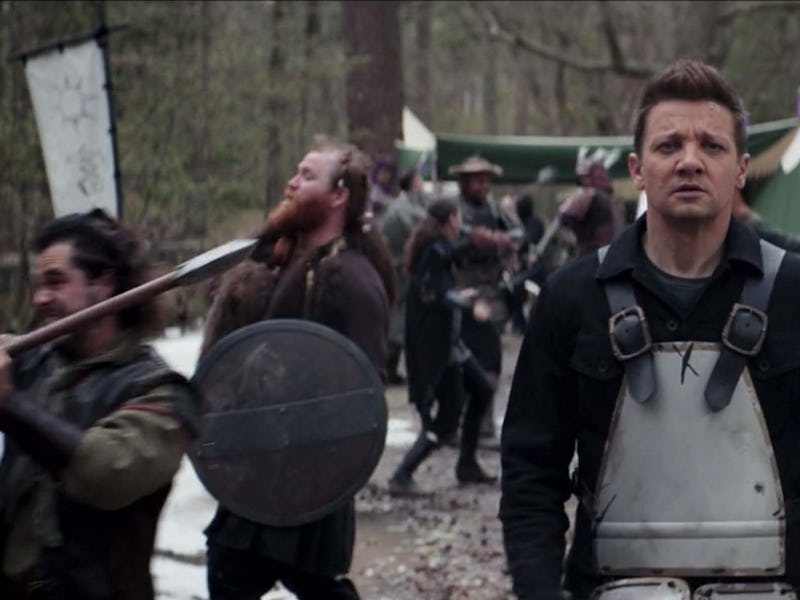When does Hawkeye take place? Why the MCU timeline is complicated.
The franchise still seems lost after Endgame.

The MCU timeline is a complicated and finely tuned machine. After Avengers: Endgame implemented time travel and Loki unleashed the multiverse, it’s not really clear where things stand chronologically in the franchise, aside from vague references to how long ago the “Blip” happened.
Now two years since Endgame hit theaters, the canon’s timeline keeps getting messier. Will we ever have a cohesive view of the MCU? Here’s how things shake out now that Hawkeye is adding another story to the pile.
Eternals changed the MCU on a massive scale, introducing a worldwide crisis involving a Celestial erupting from the sea, which was later frozen by Sersi and the rest of the Eternals. This moment was a wild twist; and under closer scrutiny, it doesn’t quite make sense.
Eternals producer Nate Moore has said his film takes place at the same time as Spider-Man: Far From Home. That web-slinging sequel was set across a summer school trip in 2023, eight months after Endgame. However, many key moments in Eternals feature characters in coats, giving the film a wintry look.
The characters in Eternals are always bundled up in the London scenes.
Could Eternals be set a few months after Spider-Man: Far From Home, given this? Or could the film’s geologically disparate settings account for the fluctuating temperatures?
Even if Eternals’ exact proximity to Far From Home remains slightly nebulous, Marvel television series have served to fill in gaps in the timeline, often taking place between films. Both The Falcon and the Winter Soldier and WandaVision dealt with the immediate aftermath of Endgame, unfolding in the spring of 2023. (Loki, of course, took place outside of the space-time continuum as a whole.)
But Hawkeye, as per comments from director Rhys Thomas to GamesRadar+, takes place in the holiday season of 2025, years after the other series but still close enough to the age of Thanos that its characters are dealing with Endgame fallout. However, by 2025, presumably more events have changed the nature of life on Earth. Technically, Hawkeye should include references to the giant Celestial emerging from the sea, or the new superhero team that formed in response, or even the massive earthquake that also factored into Eternals.
Hawkeye takes place two years after Eternals, in the winter of 2025.
It’s almost as if the Marvel movies and Marvel television series still exist in two different universes, with the movies expanding the larger universe and the TV shows filling in blanks and patching plot holes. This is a dangerous precedent to set, as future movies will rely on the TV shows to establish characters and plot points. For example, Kang the Conqueror is set to debut in Ant-Man and the Wasp: Quantumania, but Marvel fans already met his variant in Loki.
As time goes on, hopefully Marvel will realize the TV and movie worlds are part of the same universe, not two worlds to be kept separate. Hawkeye is still in its early hours, so perhaps the series will continue to contextualize itself within the larger universe as it goes. The Marvel Cinematic Universe is in a unique position to integrate its two media sides, so any missed opportunity is especially maddening.
The MCU has a chance to revolutionize the way we look at multimedia crossover storytelling. Why isn’t Marvel seizing such an opportunity?
Hawkeye is now streaming on Disney+.